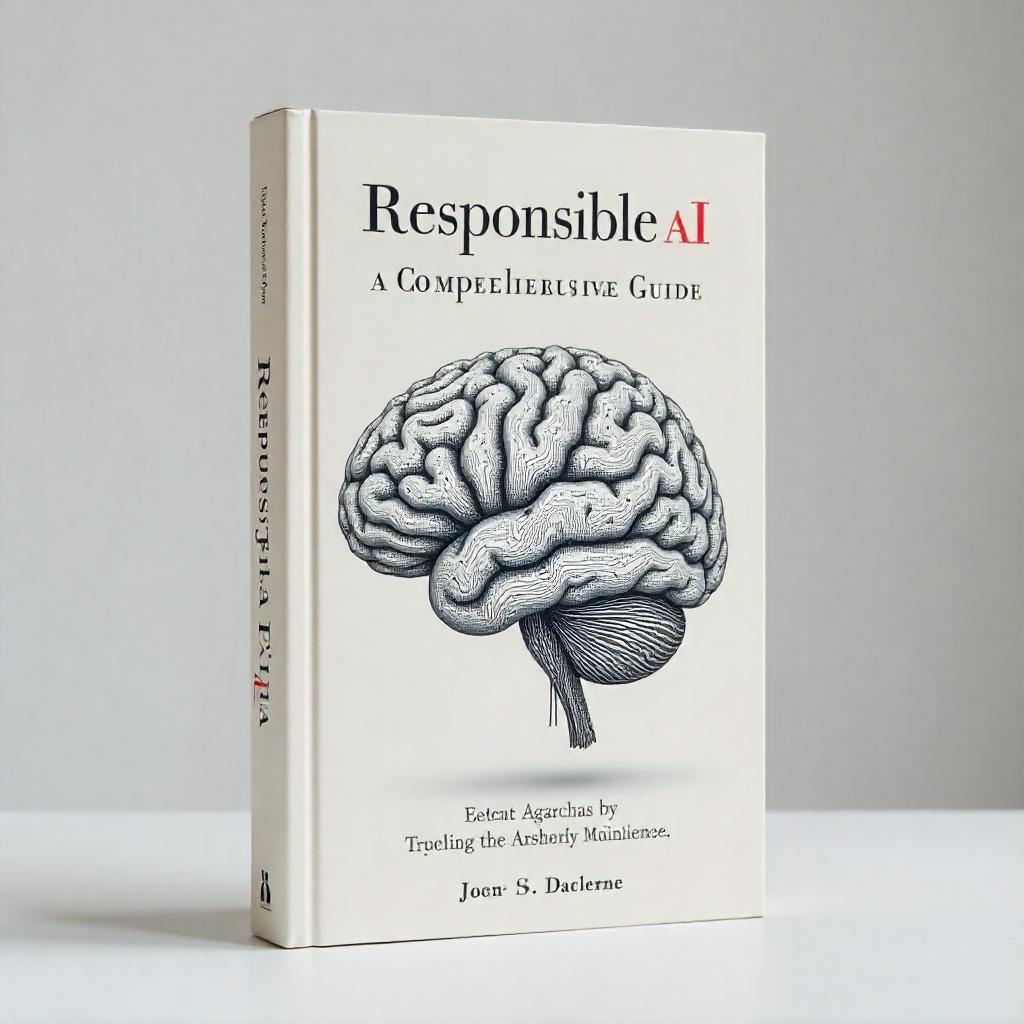Introduction
Artificial Intelligence (AI) is transforming industries and societies, enhancing efficiencies and driving innovation. However, with great power comes great responsibility. The concept of Responsible AI emphasizes the ethical and accountable use of AI technologies. In this blog post, we will explore the principles, challenges, and best practices associated with Responsible AI, providing a roadmap for organizations and individuals to navigate this complex landscape.

What Is Responsible AI?
Responsible AI refers to the development and deployment of AI systems in a manner that is ethical, fair, transparent, and accountable. It encompasses various aspects, including:
- Ethical Considerations: Ensuring AI systems align with societal values and ethical standards.
- Transparency: Making AI operations understandable to users and stakeholders.
- Fairness: Mitigating biases in AI algorithms and datasets to avoid discrimination.
- Accountability: Establishing clear lines of responsibility for AI decision-making processes.
The Importance of Responsible AI
As AI systems become more pervasive, the potential for misuse or unintended consequences increases. Here are some reasons why Responsible AI is crucial:
- Building Trust: Transparency and fairness in AI foster public trust, which is essential for widespread adoption.
- Mitigating Risks: Addressing ethical considerations can help avoid legal and reputational risks associated with biased or harmful AI outcomes.
- Enhancing Collaboration: Stakeholders, including developers, users, and policymakers, can work together more effectively when there is a shared commitment to responsible practices.
- Driving Innovation: Responsible AI encourages the development of technologies that benefit society, leading to sustainable growth.
Key Principles of Responsible AI
1. Fairness
Fairness in AI involves ensuring that algorithms do not discriminate against individuals or groups based on sensitive attributes such as race, gender, or socioeconomic status. Techniques to promote fairness include:
- Bias Detection: Regularly testing AI models for biases using diverse datasets.
- Inclusive Data Collection: Ensuring datasets represent the demographics of the population.
- Algorithmic Audits: Conducting independent audits to assess fairness in AI systems.
2. Transparency
Transparency means making AI systems’ inner workings understandable to users and stakeholders. This can be achieved through:
- Explainable AI (XAI): Developing models that provide clear explanations for their decisions.
- Documentation: Maintaining comprehensive records of data sources, model architectures, and decision-making processes.
- User Education: Providing resources to help users understand AI systems and their implications.

3. Accountability
Accountability ensures that organizations take responsibility for the outcomes of their AI systems. This includes:
- Governance Frameworks: Establishing policies and structures for AI oversight.
- Clear Responsibilities: Defining roles and responsibilities for AI development and deployment.
- Feedback Mechanisms: Implementing processes for users to report issues or concerns with AI systems.
4. Privacy
Protecting user privacy is paramount in the age of AI. Organizations should:
- Data Minimization: Collect only the data necessary for specific purposes.
- Anonymization Techniques: Use methods to anonymize data and protect user identities.
- User Consent: Ensure users have control over their data and understand how it will be used.
5. Safety
AI systems must be designed to operate safely and reliably. This includes:
- Robust Testing: Conducting rigorous testing to identify and mitigate potential risks.
- Fail-Safe Mechanisms: Implementing measures to prevent catastrophic failures.
- Continuous Monitoring: Keeping track of AI performance and making adjustments as necessary.
Challenges in Implementing Responsible AI
While the principles of Responsible AI are clear, implementing them can be challenging. Some common obstacles include:
- Data Quality and Bias: Poor-quality data can lead to biased outcomes, making it difficult to ensure fairness.
- Complexity of AI Systems: The intricate nature of AI models can hinder transparency and explainability.
- Lack of Standards: The absence of universally accepted guidelines can create inconsistencies in responsible practices.
- Resource Constraints: Smaller organizations may lack the resources to invest in responsible AI initiatives.

Best Practices for Organizations
To embody Responsible AI, organizations can adopt several best practices:
- Establish an AI Ethics Board: Form a dedicated team to oversee AI projects and ensure adherence to ethical guidelines.
- Invest in Training: Provide training for employees on ethical AI practices and the importance of fairness and transparency.
- Engage Stakeholders: Involve diverse stakeholders in the AI development process to gain multiple perspectives.
- Adopt Industry Standards: Align with existing frameworks and guidelines for responsible AI, such as the OECD Principles on AI.
- Conduct Regular Audits: Implement periodic audits to assess compliance with responsible AI practices.
Case Studies of Responsible AI
1. Microsoft’s AI Principles
Microsoft has established a set of AI principles that guide its AI development, emphasizing fairness, reliability, privacy, and inclusiveness. The company actively engages in research to reduce bias in AI systems and promotes transparency through initiatives like the AI for Accessibility program.
2. Google’s AI Ethics Guidelines
Google has developed AI ethics guidelines that prioritize social benefits, avoid creating or reinforcing bias, and ensure accountability. The company’s AI research focuses on explainability and fairness, with efforts to improve the transparency of machine learning models.
3. IBM’s AI Fairness 360
IBM has created AI Fairness 360, an open-source toolkit that helps developers detect and mitigate bias in machine learning models. This initiative enables organizations to assess the fairness of their AI systems and align with responsible AI principles.
The Role of Policy and Regulation
As AI technology evolves, policymakers play a crucial role in promoting Responsible AI. Key areas for regulatory focus include:
- Data Protection Laws: Establishing regulations that protect user data and privacy.
- AI Accountability Frameworks: Creating guidelines that hold organizations accountable for their AI systems’ outcomes.
- Ethical Standards: Promoting ethical standards for AI development and use across industries.

Future Trends in Responsible AI
As the field of AI continues to advance, several trends are likely to shape the future of Responsible AI:
- Increased Regulation: Governments are expected to implement more stringent regulations to ensure ethical AI practices.
- AI Governance Frameworks: Organizations will adopt comprehensive governance frameworks to oversee AI projects.
- Collaboration Across Sectors: Public and private sectors will collaborate to address the ethical challenges posed by AI.
- Advancements in Explainable AI: Research will continue to focus on improving the explainability of AI models.
FAQs About Responsible AI
What is Responsible AI?
Responsible AI refers to the ethical and accountable use of AI technologies, ensuring fairness, transparency, accountability, privacy, and safety.
Why is Responsible AI important?
Responsible AI is essential for building trust, mitigating risks, enhancing collaboration, and driving innovation in AI technologies.
How can organizations implement Responsible AI?
Organizations can implement Responsible AI by establishing ethics boards, investing in training, engaging stakeholders, adopting industry standards, and conducting regular audits.
What are some challenges in implementing Responsible AI?
Challenges include data quality and bias, complexity of AI systems, lack of standards, and resource constraints.
What is the role of policy in Responsible AI?
Policymakers play a crucial role in promoting Responsible AI by establishing data protection laws, accountability frameworks, and ethical standards.
Conclusion
Responsible AI is not just a buzzword; it is a necessity in today’s technology-driven world. By adhering to the principles of fairness, transparency, accountability, privacy, and safety, organizations can harness the power of AI while minimizing risks and maximizing benefits. As we move forward, it is imperative for all stakeholders to collaborate in fostering a responsible AI ecosystem that aligns with societal values and ethical standards.
For more insights on technology and innovation, visit www.infovistaa.com.
Data Sources to Reference
- OECD Principles on AI
- Microsoft AI Principles
- Google AI Ethics Guidelines
- IBM AI Fairness 360 Toolkit
- Various academic papers on AI ethics and responsible AI practices.


bm9o9r